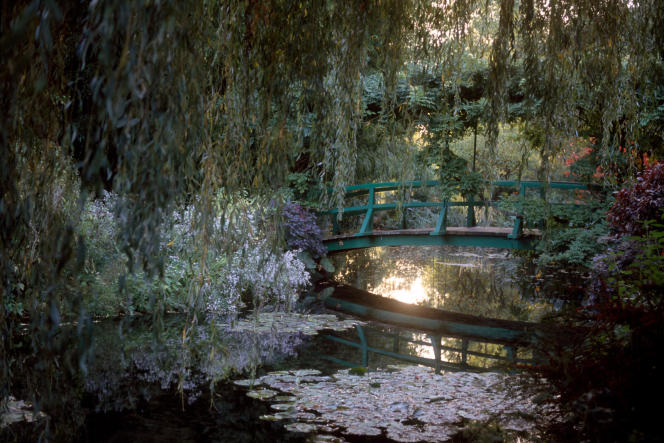When the painter Claude Monet (1840-1926) moved to a place called Le Pressoir, in a rental house in the village of Giverny, in Eure, with his companion Alice Hoschedé, they respectively had two sons for one (the Monet’s first wife, Camille, died) and six children for the other (Alice is still married). It was by taking the small railway line that connects Gasny to Vernon and which passes in front of the vegetable garden and the orchard of the property, along the Chemin du Roy, that Monet was seduced, to paint it, by the landscape. of hills and the banks of the Seine in this corner of the Norman Vexin.
This article is taken from “Special Edition Le Monde: 80 artists’ houses for the summer”2023. This special issue is on sale in kiosks or on the Internet by visiting the website of our shop.
We are in 1883, and if his Print, rising sun was sold – to the photographer Nadar – as early as 1874, the 43-year-old painter has not yet really experienced success. He nevertheless had the workshop enlarged, at the end of the house, while declaring: ” I don’t need a workshop. My workshop is the outdoors. » In fact, he reworks his canvases indoors, painted on the motif, in search of an unattainable completion, while devoting himself to his garden, his other great work (he loves flowers above all), which he wants colorful throughout the year. ” The garden is your workshop, Alice will say. There it is, your palette! »
The charmless old press transformed into ” mansion “ by its former owner is becoming, through the additions and modifications of its new occupants, a pleasant “field house” – Monet will acquire the house in 1890, thanks to an advance from his dealer, Paul Durand-Ruel, before the shrewd American collectors rush on his haystacks and… lastingly enrich the impressionist artist. The kitchen, in particular, is the object of all the attention: the master of the place, whose overweight reveals the appetite and the taste for good food, had it covered with blue and white faience tiles from Rouen. Of the nicest effect.
Transform again and again
The black cast iron stove and the imposing polished copper cookware are thus superbly highlighted, next to the dining room with its bright yellow painted walls, with its Japanese prints by Utamaro, of Hokusai or Hiroshige. The large family “composed” of the artist and his wife (they married in 1892, after the death of Alice’s husband) often share the table with very close friends (friends, not “guests”, which Monet deliberately kept at a distance). This intimate circle includes the painters Gustave Caillebotte and Berthe Morisot, the writer Octave Mirbeau or the critic Gustave Geffroy, and of course Georges Clemenceau, his lifelong friend.
You have 65.38% of this article left to read. The following is for subscribers only.
